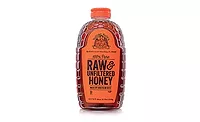Food Packaging
Food packaging: Wasting away
Food wasted at the consumer level is gaining attention, and some see packaging as the key to reducing the amount of waste.
According to the Environmental Protection Agency, almost half the food wasted in the US, approximately 44 percent, occurs in consumers’ homes. The Natural Resources Defense Council estimates a family of four throws out $2,200 of food each year, but since the US has some of the lowest food prices relative to income in the world, this waste likely goes unnoticed by most consumers.
“Because the economic impact of food purchases is not as apparent in the US or felt as significantly as it often is elsewhere in the world, Americans are less aware and less affected by their food waste output,” says Todd Bukowski, senior packaging consultant for HAVI Global Solutions.
Recently, Bukowski participated in EPA’s “Reducing Food Waste: How Packaging Can Help” webinar. He says the growing world population, an estimated additional 2.5 billion people by 2050, is one of the reasons for the new awareness of food waste in the US, and better packaging is one of the solutions for this problem.
“Several packaging and processing technologies, including high-pressure processing, aseptic and modified atmosphere packaging [MAP], can help reduce food waste across the value chain,” he says. “These processes and technologies increase shelf life to keep products fresher longer.”
For instance, shrinkwrapping a cucumber has been shown to extend its shelf life from three to 14 days. MAP uses a mix of nitrogen, carbon dioxide and/or oxygen to help extend the shelf life of fresh foods by limiting microbial growth.
“The shelf life of cheese can increase from seven to 180 days, and the freshness of meats can be extended from two to three days to as many as 21 days using MAP,” Bukowski says. “Barrier materials such as the light blocking used in some dairy products’ packaging help extend shelf life by limiting product degradation as a result of UV lights in stores.”
Microperforations in fruit packaging also can help control the in-pack environment by allowing degrading ethylene to escape. According to Bukowski, microperforations, paired with absorbers lining the container to take in the ethylene within the package, have been shown to extend the shelf life of berries from four to six days. “Similarly, oxygen scavenging technology removes residual oxygen in the pack and any oxygen that may permeate the packaging,” he adds.
Smart or intelligent labeling technology on packaging is also being developed to help detect spoiled fruit by reacting to a package’s headspace and communicating that information.
“Some new technologies being researched include a radio-frequency identification [RFID] chip in packaging that could send information about a product’s freshness to a smart device, such as a phone, watch or appliance,” Bukowski says.
For example, VTT, a research and technology company based in Finland, has created a sensor that detects the ethanol fresh fruit emits as it spoils in the package environment and sends this information wirelessly to a mobile device.
For more information:
Todd Bukowski, HAVI Global Solutions, 630-493-7400, haviglobalsolutions@havigs.com, www.havigs.com
Thea Sipiläinen-Malm, 358-20-722-111, thea.sipilainen-malm@vtt.fi, www.vttresearch.com.
Looking for a reprint of this article?
From high-res PDFs to custom plaques, order your copy today!







